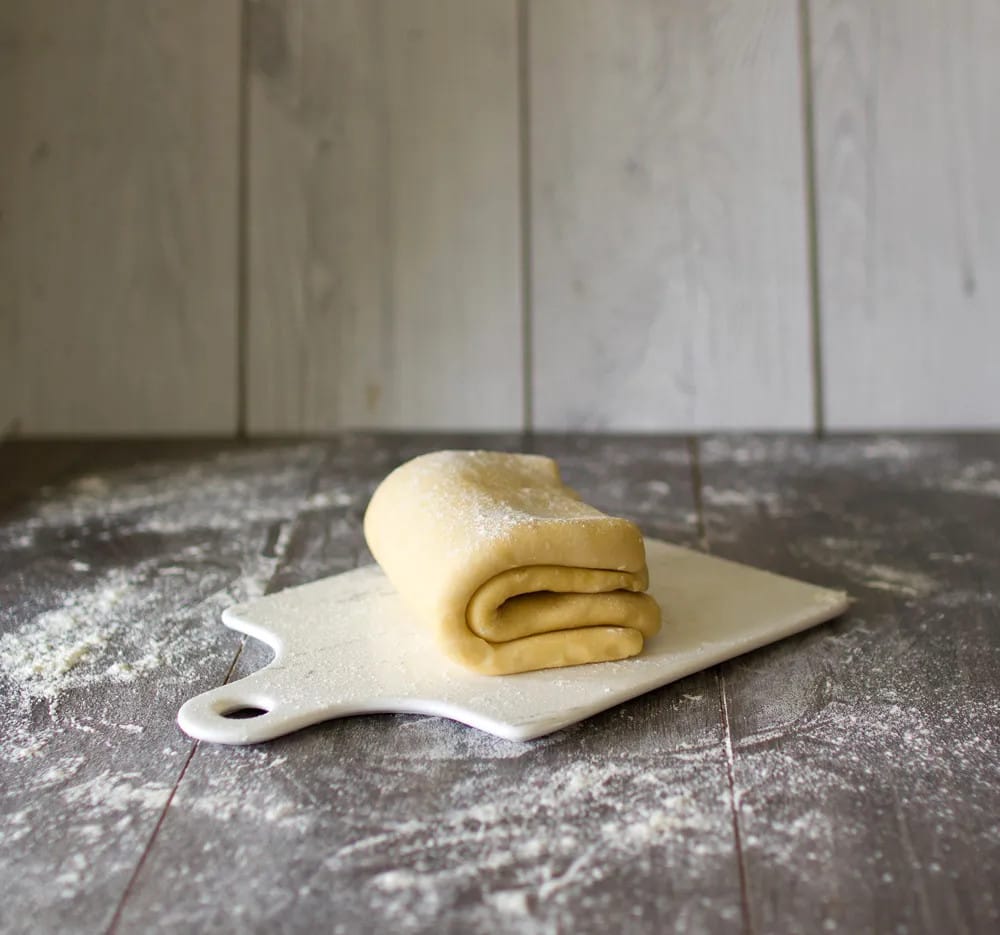Rough puff pastry, flaky pastry, blitz pastry, or quick puff pastry… whatever you want to call it, is my all-time favourite pastry to make. Not to mention one I just couldn’t live without.
From modestly topping a meat pie, to creating delicate, crisp layers in a show-stopper mille-feuille, rough puff pastry is, in my books, simply the most versatile pastry. In fact, in almost all cases where a recipe calls for puff pastry, I use rough puff pastry. As French chef, Michel Roux says, it works 75-80% as well as classic puff pastry, and done in 20% of the time! Say no more!
Initially I went for a recipe (from a well-known chef who shall remain nameless) that, over time, proved to be problematic. There was just way too much butter and each and every time I baked it, grease leaked out in great puddles. I persevered for a while, but eventually went in search of a better recipe and, thanks to Gordon Ramsay (on BBC Good Food.com), found one.
This pastry uses equivalent amounts of flour and butter and bakes up like a charm – no butter leakage and way lighter and flakier than the one I used previously. I’ve used it now many times and can vouch for it 100%.
As with most types of pastry, the key is to use cold butter and cold water, and to handle the dough as little as possible. And, when mixing the ingredients together, you definitely don’t want to distribute the butter too evenly. Keep the mixture chunky – as you work with it, the butter will even out and create a kind of marbled effect in the dough. If you are unfamiliar with the process, I can recommend this excellent video by the aforementioned Michel Roux (you’ll see that his recipe is the same as Gordon Ramsay’s), in which he demonstrates the entire process.
Oh, and if you’re not fussed on making the dough with your hands, you can absolutely make it in a food processor – I’ve done this plenty of times myself and it’s worked so well, I don’t bother making it the other way anymore. Simply pulse the ingredients together until the dough just starts to clump (don’t over-process!) then dump it on the counter and bring it together with your hands.

ROUGH PUFF PASTRY
Ingredients
- 8.8 oz strong plain flour (I used strong Italian flour)
- 1 teaspoon fine sea salt
- 8.8 oz unsalted butter (cold and roughly diced)
- About 5 fl oz cold water (you likely won't need all of it)
Instructions
- Sift the flour and salt into a large bowl. Add the roughly diced butter to the bowl with the flour and salt.

- Using your fingers, rub in the butter loosely (you don’t want to completely rub the butter in; pieces of butter should remain clear to see).

- Make a well in the bowl and pour in about half of the cold water, bringing together gently until you have a firm rough dough, adding extra water only if needed. Don’t overwork the dough at this point – just bring it together enough so that it holds together.

- Then cover with cling film and leave to rest for 20-30 minutes in the fridge.
- Turn the dough out onto a lightly floured board, knead gently and, using a floured roller, roll gently into a smooth rectangle, where the length is approximately 3 times the width. Keep edges straight and even. At this point the butter should still be visible as a marbled effect.

- Fold the top third down the centre…

- Then fold the bottom third up and over that (a classic ‘letter’ fold which gives you 3 layers).

- Give the dough a quarter turn (to the left or right) and roll out again as before. Fold into three again, cover with cling film and chill for 20-30 minutes before rolling to use.

- While Gordon Ramsay leaves the process at this point you can, if you have time, repeat the two turn sequence one more time to achieve more layers (Michel Roux does this). Take out the chilled dough, roll it out once again to a rectangle, do one ‘letter’ fold (folded into three), give the dough a quarter turn, then roll and fold one last time. Wrap in cling film and chill for 20-30 minutes before rolling to use.










I haven’t used this recipe yet, but why is there no No. 9 instruction?
Hi Diane. Thanks for letting me know! Actually, every time an image is used it seems to skip a number. There’s nothing I can do about that, but the good news is that the recipe steps are all there. Cheers.